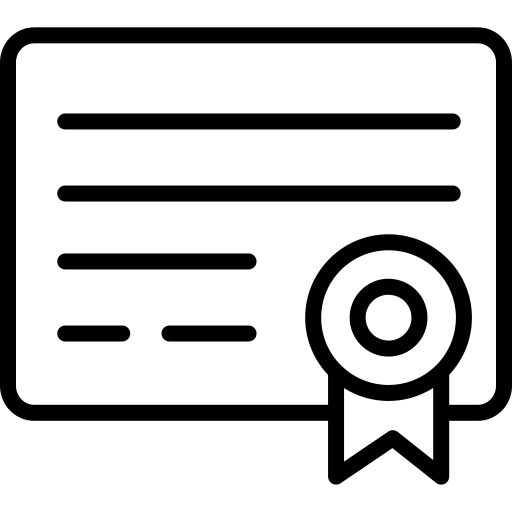Description
This is the course material page for the Introduction to Programming course (BSCS1001, 5 cr) and the Advanced Course in Programming (BSCS1002, 5 cr) from the Department of Computer Science at the University of Helsinki.
To pass either of the two courses you are expected to complete programming exercises and take part in an exam. Please see the Grading and exams page for more details.
The Introduction to Programming course consists of parts 1 through 7 in the material, and the Advanced Course in Programming consists of parts 8 through 14.
Syllabus
Introduction to ProgrammingPart 1In this part:1. Getting started
2. Information from the user
3. More about variables
4. Arithmetic operations
5. Conditional statementsPart 2In this part:1. Programming terminology
2. More conditionals
3. Combining conditions
4. Simple loopsPart 3In this part:1. Loops with conditions
2. Working with strings
3. More loops
4. Defining functionsPart 4In this part:1. The Visual Studio Code editor, Python interpreter and built-in debugging tool
2. More functions
3. Lists
4. Definite iteration
5. Print statement formatting
6. More strings and listsPart 5In this part:1. More lists
2. References
3. Dictionary
4. TuplePart 6In this part:1. Reading files
2. Writing files
3. Handling errors
4. Local and global variablesPart 7In this part:1. Modules
2. Randomness
3. Times and dates
4. Data processing
5. Creating your own modules
6. More Python featuresAdvanced Course in ProgrammingPart 8In this part:1. Objects and methods
2. Classes and objects
3. Defining classes
4. Defining methods
5. More examples of classesPart 9In this part:1. Objects and references
2. Objects as attributes
3. Encapsulation
4. Scope of methods
5. Class attributes
6. More examples with classesPart 10In this part:1. Class hierarchies
2. Access modifiers
3. Object oriented programming techniques
4. Developing a larger applicationPart 11In this part:1. List comprehensions
2. More comprehensions
3. Recursion
4. More recursion examplesPart 12In this part:1. Functions as arguments
2. Generators
3. Functional programming
4. Regular expressionsPart 13In this part:1. Pygame
2. Animation
3. Events
4. More pygame techniquesPart 14In this part:1. Game project
2. Robot and boxes
3. Finishing the game4. Your own game
 Online Courses
Online Courses  Independent
Independent
 Free
Free  On-Demand
On-Demand  Beginner
Beginner  Free Certificate
Free Certificate Python Programming MOOC 2023
-
TypeOnline Courses
-
ProviderIndependent
-
PricingFree
-
DurationOn-Demand
-
DifficultyBeginner
-
CertificateFree Certificate
This is the course material page for the Introduction to Programming course (BSCS1001, 5 cr) and the Advanced Course in Programming (BSCS1002, 5 cr) from the Department of Computer Science at the University of Helsinki.
To pass either of the two courses you are expected to complete programming exercises and take part in an exam. Please see the Grading and exams page for more details.
The Introduction to Programming course consists of parts 1 through 7 in the material, and the Advanced Course in Programming consists of parts 8 through 14.
Introduction to ProgrammingPart 1In this part:1. Getting started
2. Information from the user
3. More about variables
4. Arithmetic operations
5. Conditional statementsPart 2In this part:1. Programming terminology
2. More conditionals
3. Combining conditions
4. Simple loopsPart 3In this part:1. Loops with conditions
2. Working with strings
3. More loops
4. Defining functionsPart 4In this part:1. The Visual Studio Code editor, Python interpreter and built-in debugging tool
2. More functions
3. Lists
4. Definite iteration
5. Print statement formatting
6. More strings and listsPart 5In this part:1. More lists
2. References
3. Dictionary
4. TuplePart 6In this part:1. Reading files
2. Writing files
3. Handling errors
4. Local and global variablesPart 7In this part:1. Modules
2. Randomness
3. Times and dates
4. Data processing
5. Creating your own modules
6. More Python featuresAdvanced Course in ProgrammingPart 8In this part:1. Objects and methods
2. Classes and objects
3. Defining classes
4. Defining methods
5. More examples of classesPart 9In this part:1. Objects and references
2. Objects as attributes
3. Encapsulation
4. Scope of methods
5. Class attributes
6. More examples with classesPart 10In this part:1. Class hierarchies
2. Access modifiers
3. Object oriented programming techniques
4. Developing a larger applicationPart 11In this part:1. List comprehensions
2. More comprehensions
3. Recursion
4. More recursion examplesPart 12In this part:1. Functions as arguments
2. Generators
3. Functional programming
4. Regular expressionsPart 13In this part:1. Pygame
2. Animation
3. Events
4. More pygame techniquesPart 14In this part:1. Game project
2. Robot and boxes
3. Finishing the game4. Your own game

